When Polar launched their Ignite 3 watch this past fall, they also announced a new feature: SleepWise. This new feature aimed to predict how your day would go, mostly in terms of alertness – and specifically, how you felt at certain times throughout the day. It would do this by looking at your sleep, and then giving you relative ‘Boost’ levels throughout the day. Essentially, it’d identify which hours of the day you’d feel most tired or most alert via color coding. It’d also identify the ideal time for you to go to sleep.
I suppose the alertness idea being you could proactively block your calendar with appropriately timed coffee breaks each morning. Perhaps Polar made a large financial investment in Starbucks recently. And hey, fictionally assuming they did such an investment this past fall, that’d have worked out pretty darn well for them, given Starbucks shot up in price in the days following the release of SleepWise.
Kidding aside, I’ve been using this for a few weeks now, fulfilling the various Polar night sleep thresholds till it reached ‘full reliability’ (and then some). So I figured I’d give it a quick review of sorts. I wanted to look at how it handled normal sleep nights, but also wonky sleep nights. Does it give usable and actionable data? And how does that fit in with the rest of what Polar shows sleep-wise (in the generic sleep-dash-wise sense).
This feature is now available to users of the Polar Ignite 3, Pacer Pro, Pacer, Vantage V2, and Grit X Pro. However, it’s only visible on the Polar Flow app (meaning, you don’t see it on the watch). Polar says that any other watches that support ‘Sleep Plus Stages’ already, will get this feature in the next few months.
Daily Usage:
To begin, you’ll need to have at least 5 nights of sleep before you start getting SleepWise advice. Though, it will say you need 7 continuous nights of sleep in order for your forecast to be fully valid. However, interestingly, it actually lets you add in manual sleep results to increase your sleep count, which is kinda cool. No other platforms allow you to manually add in sleep data (or any other fitness data) to meet thresholds. Still, I didn’t do that, I just let it run its course.
Once you’ve met the threshold you’ll start getting daily sleep boost level charts. These charts show up in a few places, starting with your daily dairy. This is like the social feed of your day, minus all the memes and addicting Instagram content. You can see a few examples below of this:
(I’ve included the same three nights in the same order for all these screenshots)
What you’re looking at is a color-graded chart showing high and low periods of ‘Boost’, or energy. The brighter the green, the more energy you have, the darker the green, the less energy. That’s also shown in height on the graph (higher is better), I’d suggest a bit more color differentiation would be helpful. This seems like it’s trying to say ‘everything is always green all the time’, when in reality, it’s not.
When you tap on this, you’ll be brought to a more detailed page about it. This page shows essentially the same chart, but it also shows your ‘Sleep Gate’, which is the time when it estimates/hopes you’ll go back to sleep again. This shifts slowly over time based on what I’m seeing, using your trends. It also has a confidence level, which are the three-color purple boxes.
You’ll notice the little asterisk at the bottom. This happens when you miss a night of sleep, slightly reducing the confidence of the forecast. In my case, that happened twice (two nights in a row this past weekend), though for different reasons.
In terms of these days, you can pretty clearly see the almost exacting pattern that by 6ish hours after I woke up (12-2PM), it says I’ll feel a lull of alertness. And then around dinner-time, I’ll get a boost of energy. Effectively the natural circadian rhythm at work here of my body.
First night was because I slept less than 4 hours one night. Last Thursday night while waiting for Strava to not respond, it brought my sleep down to less than the four-hour threshold for Polar’s Sleep algorithm. Below that, it can’t detect that you ‘slept’, and thus, it breaks SleepWise (more on that in a second). The second night was when apparently I didn’t put the watch on the charger quite right a few hours before bed, and then didn’t catch it when I put the watch on while crawling into bed. In reality, it only had a few percent left, and died peacefully during the night.
However, nicely, Polar lets me manually add in sleep for both of these. In the case of the sub-4 hour sleep, I was probably at 3h 45mins, so I just tweaked it slightly more to 4hrs 1min (it can’t be 4hrs exactly, I tried), and then it magically did its charts. You can see it gave me the darker green for the day, knowing it was going to be a fugly day. But, as I’ll cover later, it doesn’t know/account for me going back to sleep an hour later for a nap.
Here you can see the weekly charts for Boost and other sleep metrics.
You can see the trend lines along the bottom there, showing the nightly boost from sleep, and whether that was a lot of boost or not. You can also see the clear trend of sleeping in on the weekends,
In fact, Polar even discusses this with a refreshingly honest explanation in a support article Polar has (just like the previous one). Usually, support articles from so many companies get blander with each edit, but this one uses concrete and helpful examples (bolding mine):
“Many people working office hours tend to stay up late and sleep in on weekends. This is how they end up shifting their sleep gate towards staying up late on Sunday night as well. In this very typical case of social jet lag, trouble falling asleep on Sunday night may result in starting a new working week sleep-deprived. Going by the book, the trick to avoid Sunday insomnia and sleep-deprived Mondays is to go to bed and get up at the same time every day. However, if you’ve ended up staying up late, you should rather compensate that with a nice early afternoon nap instead of sleeping in.”
Of course, you can also just solve this by doing a nice long hard workout on Sunday. Or having small children. Either way.
Real World Thoughts
First, let’s go back to Polar’s support article, for another super honest reality check discussing boost levels, saying (bolding mine again):
“Please notice that our forecast is based on sleep only. It doesn’t react to anything else you might or might not do during the day. In other words, the graph won’t react to the cups of coffee you might consume or the cold showers or brisk walks you might take. Inner motivation also plays a role in how sharp you feel. No matter how high your sleep-based boost level, you’re likely to start feeling drowsy during the course of a very boring lecture. On the other hand, you might feel quite sharp even after a bad night’s sleep, if you have a truly interesting task at hand.”
The point I appreciate here is that Polar isn’t trying to hide behind this being always accurate in terms of alignment to feeling. The simple reality is that if you’re mid-mountain biking, you’re unlikely to feel the same level of drowsy as watching paint dry.
And that’s sorta my challenge here. In my case, I’m not really a 9-5 office worker. Meaning, while my schedule boundary is fairly predictable due to kids drop-off/pick-up, my intra-day is super random. I’m constantly testing devices, and thus constantly doing workouts at all hours of the day. Sometimes that’s morning, sometimes afternoon, evening, etc… And with that, I’m also doing plenty of other things that can keep be engaged/stimulated.
Don’t get me wrong, I also sit down and write a lot, which can be fun/exciting, or boring – depending on the topic. But it’s not super predictable on a daily basis. Thus in many ways, the Boost levels sorta mirror what all of us already know: Mid-afternoon is time for coffee. And if I sleep very little, I’ll be tired all day long.
Now, there are some catches to SleepWise. First, it doesn’t react to anything you do during the day. So let’s say I have a good sleep, wake up at 7:30AM, and then at 9AM I go for a 3-hour ride (or a long run). It doesn’t account for that and update to note the obvious that by 3-4PM after eating and then sitting back down to my desk, I’ll probably be hitting a strong low. This is a bit different than what you’d see with something like Garmin’s Body Battery (also leveraged by other companies using Firstbeat Analytics algorithms).
Except that too is also different. Garmin’s Body Battery doesn’t really tell you whether you’re feeling alert/drowsy. It just gives you general energy left in your tank for the day. So while these have a relationship to each other, it’s more of a Venn diagram overlap style relationship, than being direct competitors. I can’t think of anything in Garmin/Whoop/Apple’s stable that directly competes with this feature.
In any case, the next catch is that it doesn’t handle short sleep, or daytime naps. For example, up above I noted how it skipped one night because I was up waiting for Strava to not respond. In that case, I only slept about 3:45 hours (4:00AM-7:45AM), which didn’t meet the threshold Polar has of four hours of sleep. However, connectedly, at 8:30AM after doing the kid school drop-off, I went back to sleep for another 3 hours. But Polar doesn’t support naps. So while my total sleep that day was 6ish hours, it wasn’t seen as one cohesive block.
Fair enough, that’s a wonky scenario to support. However, I do think that arguably the most value in this feature would be from supporting naps, since that’d be ideal if it could react to that and update my day accordingly. Hopefully we can see that down the road.
But the same goes for shorter periods of sleep. Again, if you’ve ever taken a red-eye across the Atlantic from the East Coast, or across the US coast to coat, it’s unlikely you clocked more than 4 hours of sleep by time (given all the take-off/landing interruptions/dinner/etc on what is normally a 5-6 hour flight). In this case, having SleepWise would actually be super useful the next day to try and mitigate your day.
Still, every technology has gaps, especially V1 variants of algorithms. However, it does seem like the legacy companies (Garmin/Polar/Suunto/etc…) all struggle with naps and short sleep. Whereas companies like Oura and Whoop have it built into their fundamentals (even if it’s sometimes a bit wonky in terms of recovery accountability, at least it recognizes it).
Wrap Up:
(Awesome DCR ‘Trainer & Chill coffee mug found here in the DCR Store, increased alertness levels vary.)
In the grand scheme of the wearables marketplace, Polar actually has quite a bit of depth in the sleep realm. Like most companies, they correctly clock the time I fell asleep and woke up, they attempt to throw some sleep phases/stages on it (like everyone else), and then they give me a sleep score (also like everyone else). However, Polar continues further, with things like categorizing whether your sleep solidity and amounts are better or worse than normal, whether it’s helpful for ‘regeneration’, nightly sleep cycles, ANS charge, beat-to-beat intervals, heart rate variability (+ vs 28-day avg), breathing rate (+ vs 28-day avg), and so on.
In many ways, I think Polar might actually have one of the most sleep metric-laden wearables out there, at least in terms of data points. And now they’ve added in SleepWise. And unlike the piles and piles of data you can scroll through on the watch (ANS/HRV/B2B/etc…), this is actually presented in an easy-to-understand way on the app.
However, I do think Polar needs to reconcile all this a bit. It’s feeling a little bit like a giant fruit salad with every fruit available in the store. Further, most companies are shifting towards highlighting/enumerating HRV trends, whereas Polar’s are buried in the watch menu and app UI in totally different spots, and not really available to trend via app/watch or make sense of. Same goes for ANS or Beat-to-Beat data points. And, if arguably SleepWise Boost levels are so important, they should show up on the watch in a ‘Morning Report’ style screen akin to what Suunto/Garmin/Apple others have been shifting towards.
And then once that’s there on the watch, offer specific insights as to what do in my day to leverage that. Meaning saying specific things like “Timing your workout to 12PM today would be ideal”, or “Consider coffee/caffeine at 2PM today for optimal alertness later in the afternoon”, or just “Look, give up on today being productive, it’s just not in the cards”.
As I’ve said many times over the last decade, bringing specific recommendations based on the piles of data is most important. We’re seeing companies do this more and more (including Polar in workout areas). Overall, I think they’re on the right initial track with SleepWise, and look forward to seeing where it can go in future iterations.
Finally, it’s worthwhile noting that unlike most of their competitors, Polar has published an actual legit whitepaper on how it works. Now, this isn’t a peer-reviewed paper, and of course, it’s from Polar themselves. But at least they outline all the scientific basis and references (other studies) for their algorithm, as well as more depth on how the algorithm works and functions within. Again, this is a step that almost no other companies in this space do. So regardless of whether or not I agree with the outputs or implementation of the feature, I do greatly appreciate when companies take the effort to clearly document it.
With that, thanks for reading!
FOUND THIS POST USEFUL? SUPPORT THE SITE!
Hopefully, you found this post useful. The website is really a labor of love, so please consider becoming a DC RAINMAKER Supporter. This gets you an ad-free experience, and access to our (mostly) bi-monthly behind-the-scenes video series of “Shed Talkin’”.
Support DCRainMaker - Shop on Amazon
Otherwise, perhaps consider using the below link if shopping on Amazon. As an Amazon Associate, I earn from qualifying purchases. It doesn’t cost you anything extra, but your purchases help support this website a lot. It could simply be buying toilet paper, or this pizza oven we use and love.

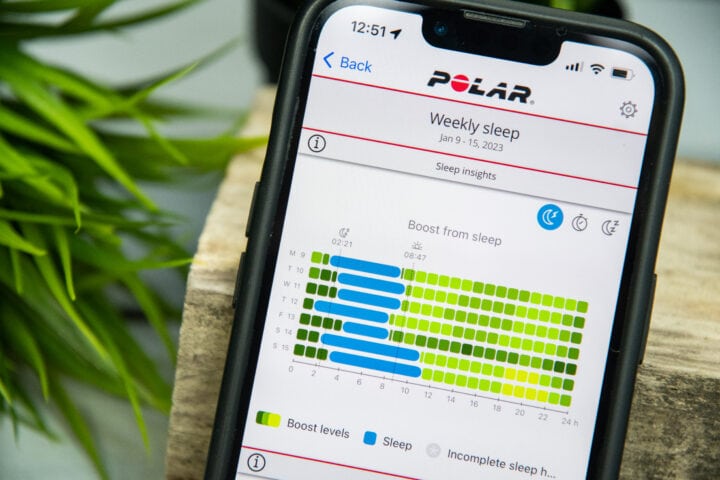
![clip_image001[6] clip_image001[6]](https://media.dcrainmaker.com/images/2023/01/clip_image0016_thumb.png)
![clip_image001[15] clip_image001[15]](https://media.dcrainmaker.com/images/2023/01/clip_image00115_thumb-1.png)

![clip_image001[9] clip_image001[9]](https://media.dcrainmaker.com/images/2023/01/clip_image0019_thumb-1.png)
![clip_image001[13] clip_image001[13]](https://media.dcrainmaker.com/images/2023/01/clip_image00113_thumb.png)
![clip_image001[11] clip_image001[11]](https://media.dcrainmaker.com/images/2023/01/clip_image00111_thumb-1.png)
![clip_image001[29] clip_image001[29]](https://media.dcrainmaker.com/images/2023/01/clip_image00129_thumb.png)
![clip_image001[31] clip_image001[31]](https://media.dcrainmaker.com/images/2023/01/clip_image00131_thumb.png)
![clip_image001[33] clip_image001[33]](https://media.dcrainmaker.com/images/2023/01/clip_image00133_thumb.png)
![clip_image001[25] clip_image001[25]](https://media.dcrainmaker.com/images/2023/01/clip_image00125_thumb-1.png)
![clip_image001[27] clip_image001[27]](https://media.dcrainmaker.com/images/2023/01/clip_image00127_thumb-1.png)
![clip_image001[35] clip_image001[35]](https://media.dcrainmaker.com/images/2023/01/clip_image00135_thumb.png)
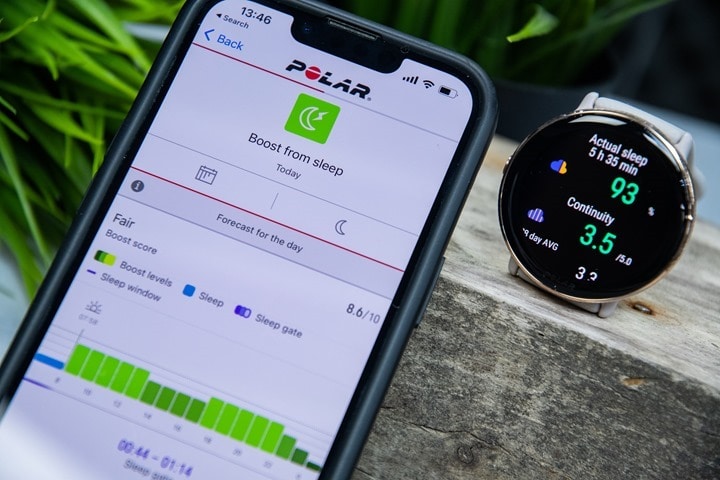
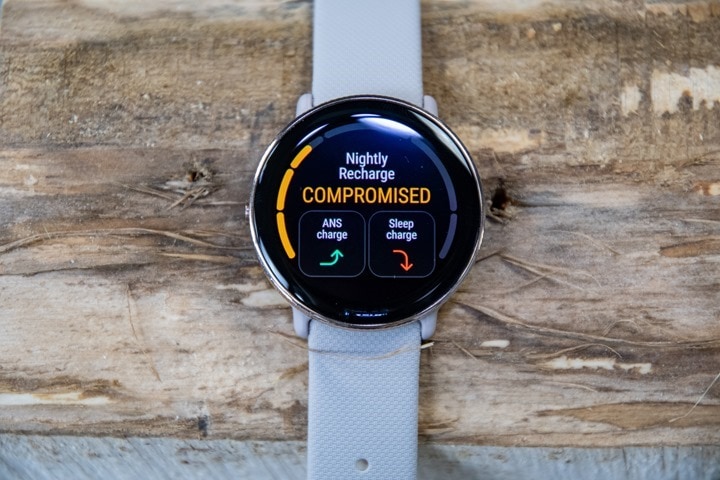
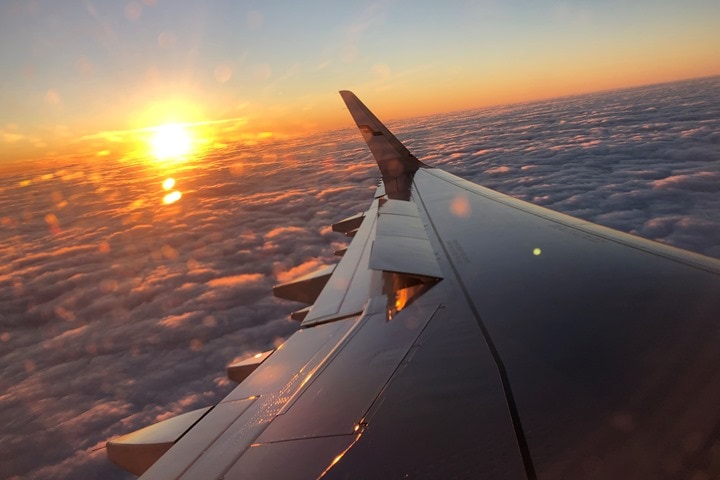
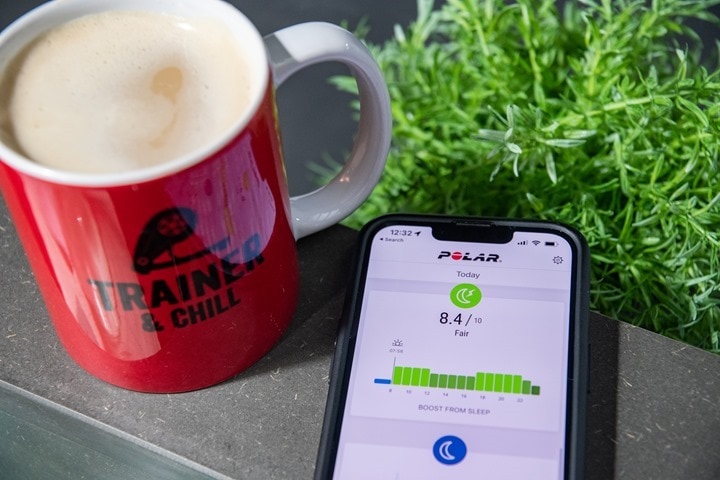





















Interesting you can tell the Polar app and ecosystem “No, I actually did sleep last night”. I’ve edited the length of my sleep in Garmin Connect, but never thought about it completely missing a night and not being able to add it in. Seems a simple enough feature, given all the movement and HR data is ultimately there, but the watch “forgot” to do the analysis.
Yeah, it’s actually a surprisingly cool feature.
Anything news from polar or suunto soon????
The fact that Polar allows you to add in missing nights of sleep brings up one of the things I am completely baffled by: All of these sleep monitoring and energy monitoring and appraisal systems spend loads of effort on accurate sensor data and clever algorithms, but hardly ever (this being the exception) allow you to edit your sleep time or add in other periods of sleep (naps) that will have a much greater effect (if wrong) on your energy level and sleep quality than Everything they are doing. Even though many won’t bother to correct the data, if you want accurate results this is critical (and not difficult to implement) but nobody does it. Pretty dumb.
This article is of great help to me.
I have a Polar Vantage M2 and a Polar Pacer Pro.
I have been wearing my watch all day, every day and night and I’m a tad baffled about all this.
Overall, the watch(es) have been very accurate, as of late I’ve had Covid and also a chest infection (I’m normally very fit and healthy) ……… I work for the NHS which isn’t a healthy environment to be in although I do love my job.
Like DC Rainmaker said Sleepwise doesn’t account for the “naps” that are taken during the day, as I’ve been ill I have slept during the day.
Great article 👍👍👍
Any advice would be really appreciated.
I have some experience with the shortcomings of the Polar, old Garmin, and FirstBeat sleep algorithms. Unfortunately, there aren’t many brands that can measure naps in their sleep analysis software. Huawei, for example, is one exception, more precisely, the backend behind the watch. However, since their products have improved a lot in optical HRM and GNSS accuracy, comparing them with other manufacturers’ products would be worthwhile. Provided Ray sees fantasy in it.
Nice to see that Polar completely abandoned the GritX…
Rest assured Matt Ostrowski
link to support.polar.com:
“SleepWise will be rolled out to the rest of the Polar users with watches that support Sleep Plus Stages starting in early 2023.”
Nightly HR/HRV/BR graphs etc. can be found in the app if you deep dive into the Nightly Recharge tab. Sometimes it’s just not very clear that you can drill into things.
Oh, Nice!
I never thought to go back to the timeline and click on Nightly Recharge to see my sleep stats that apparently defected from the sleep stats section. Though, in retrospect I probably should have thought about it that way, since the watch organises it in roughly the same confusion manner.
True, but Des had the same problem, so I guess it’s hard to spot if you don’t use the app that often. 🤔
And the split between watch/app/web is definitely an ongoing issue. After all these years, you still can’t see Nightly Recharge trends in the Reports Section of Polar Flow Web, Recovery Pro is still watch only, but the actual HRV baselines can only be found in the (Orthostatic) Test Report section of Polar Flow Web, SleepWise is app only. I mean… 🤷
I keep hoping for Polar to release a tracker again – or screen free similar to whoop. I love the verity sense and something based on that size / armband with longer battery life and all the daily tracking features would be great. I don’t want to wear a sports watch all day and night.
Polar seem to have the know how for a device like this, just please Polar bring something out!
Totally agree. I’d have though for Polar (or Garmin for that matter), this would have been a silly easy thing for them to nail.
What Polar should do, they have to create a “sport profile” “napping” which can be recorded with a simple push of a button (we can say that napping is a planned activity and with that, additonal sleep data can be considered) :)
In terms of referencing articles, Garmin (or others) miss the link with Firstbeat articles who actually publish a lot.
(current Vantage user, therefore hoping to test this SleepStages soon as promised by Polar)
Yeah, Firstbeat used to publish a lot, but now that they’ve been bought (or more technically, split), the algorithm side doesn’t publish much anymore – at least in whitepaper format. Their technical explanation pages are actually pretty good, but they’re often rather delayed from what Garmin releases.
It’s really too bad, cause those technical peoples are still there (and I still chat with them, and they still answer things super deeply). I’d love to see the those Firstbeat/Garmin peoples do Webinars like the inReach team does (see this for example: link to youtube.com or this link to youtube.com or this best practice one: link to youtube.com)
Those are super cool, super detailed, and from basically the head/lead of the inReach technical team. Firstbeat does occasionally post to the Garmin Blog, but again, would love to see a deep dive webiner style on certain topics (e.g. Stamina, or Training Status, or HRV Status, etc…). There’s so much behind the scenes into those areas that rarely get bubbled up.
And honestly, same applies for Polar too.
Emailing and waiting for Strava replies = wonky sleep night. 😬
I have a polar vantage v2 and I can’t find this in my polar flow app at all. Is this on the web version? Or on both?
You probably need to reinstall Polar Flow. Sleepwise is app only.
Normally it’s kids = wonky sleep night.
This time it’s adults acting like kids.
Did you solve this? I also cannot see it in the Polar Flow app.
I need a watch inform me the exact day of my death(+/- a week), based on my HRV sleep data.
So I could better plan my investments.
If it just gave it within 3 years it would be a great help. I would not want it more exact than that. In the meantime, I just have to act as if I am meeting my maker tomorrow, but save as if I will last to age 120.
When we look at, Sleep Wise app idea to help you get better sleep. With It, personalized sleep advice, sleep tracking, etc. it does not sound bad to me, and kinda creative too.
But beside that (on my own theory) is it possible to try something alternative and more natural, which decrees the cause of lack of sleep itself, like smart device, the phones and watches, since these cold material kept you connected to it, until you almost become part of it.
A few ideas:
1) Garbage in – Garbage out. I’ve had the m200, m430 and now Vantage M. They all undercount my sleep by many hours. If my polar watch consistently says I’m ‘falling asleep’ 3-4 hours after I go to bed for a 7-8 hour sleep any conclusions drawn from its data are useless. Oh, the new Polar is better? Yep, heard that before. And the simplest solution – a user controlled “I’m starting/stopping a sleep” option is still lost on them. So nappers and shift workers are always out of luck. Likewise with measuring accurate HRV at the wrist when most wearables struggle to get accurate resting heart rates.
2) Yes, you can edit your sleep now, but only by an hour or two on either end. If the Polar is out by more than two hours it stops you. Also, when you edit the sleep to extend it, it loses the phases – not that phases can be accurately measured by a watch or that people have any way to control or influence their sleep phases.
3) I love that you have to look on the web based Flow for some sleep data but you have to look on the app based Flow for the other sleep data and you can only edit your sleep on one of these two. Polar can’t be bothered to make the two Flows look consistent or be fully interchangeable. I have to use both to see everything. This happens for workouts and reports as well.
4) Until Polar or preferably an independent researcher shows a study comparing a control group doing nothing or just using a sleep journal to a group using SleepWise to time their training sessions has any benefit this is just more pretty flashing lights.
5) This new ‘How’s your day going to be’ looks like a downmarket version of the commercial version of the SAFTE model used by Fatigue Science. That’s a company you should check out.
After a lot of time wasted playing with Polar sleep analytics I switched to a simple 5 minute morning HRV reading with a chest strap. If my HRV is good enough then my sleep was good enough. If my HRV is poor then all the sleep in the world wasn’t the answer. I don’t need to wear anything all night for weeks on end to measure it.
Further, sleep is like throwing a ball – once your head hits the pillow you don’t have any more control over it – it’s what you did before you went to bed that has an effect.
Hi! Awesome review as always.
What’s your opinion on using “any” polar watch as a hrv/hr tracker while sleeping.
Theoretically from the unite to the vantage v2 passing by the ignite 3, they will all do this “with relatively accuracy”.
Right?
body battery ist without any science evidence in contrast to sleepwise. You are no battery, that loses energy about time